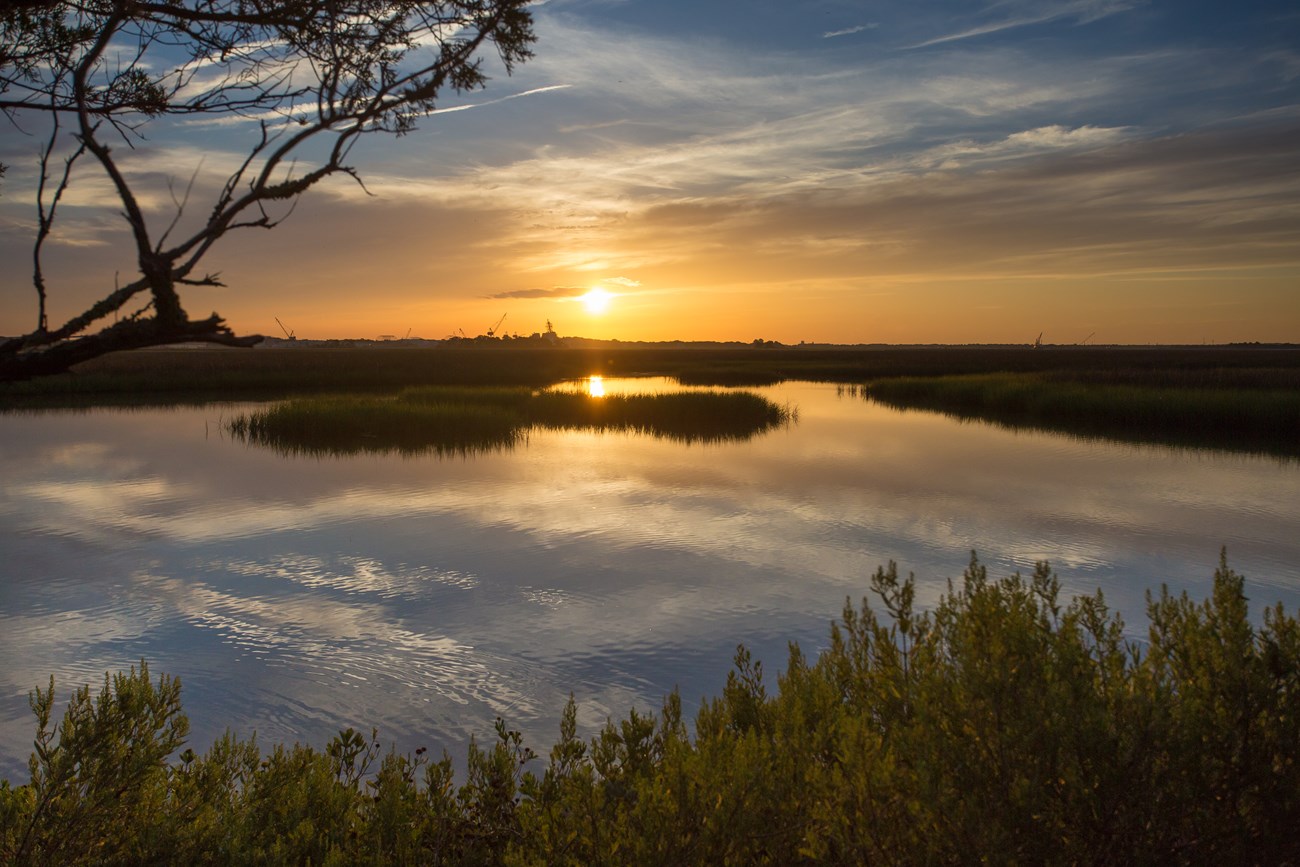Last updated: November 14, 2024
Article
Project Profile: Build Coastal Resiliency with Oyster Modules
Bipartisan Infrastructure Law
Invasive Species | FY24 - $388,000

City of Jacksonville
The National Park Service (NPS), with the help of local youth, will restore over 100 meters of shoreline at Timucuan Ecological and Historic Preserve. Pervious Oyster Shell Habitat modules created from oysters recycled from restaurants will be installed in the intertidal zone and will serve as the base of new oyster beds. These modules will provide an anchor for new oyster bed growth that will decrease erosion, improve water quality, and increase the ecological functions of salt marsh at these sites. The project will restore habitat for multiple priority species, improve recreational opportunities, and strengthen ecosystem resiliency.
Why? Some areas of the Timucuan Ecological and Historic Preserve have experienced vegetation and sediment loss due to wake actions and rising sea levels. Establishing healthy oyster beds will allow the salt marsh to keep pace with rising sea levels through sediment adaptation. Additionally, three Species of Greatest Conservation Need call these marshes home: scalloped hammerheads, sandbar sharks, and American oystercatchers. It is essential to these species that this ecosystem be protected.
What else? The parks involved in the project will engage youth through education, volunteer, and employment opportunities. Programs like these inspire future generations to protect, restore, and build resilience in the ecosystems around them.
